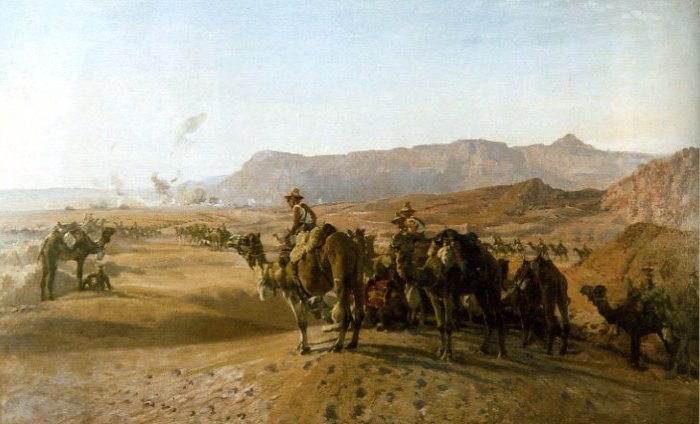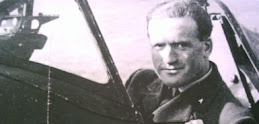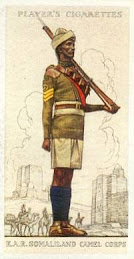Wartime flying boat pilot of high ability who made his career in the RAF and flew more than 70 types of aircraft.

Air Chief Marshal Sir John Barraclough, who died on Saturday aged 90, gave an exceptionally long period of devoted service to the Crown and to defence affairs; after serving in the RAF for 38 years, in retirement he conducted various studies for the Air Force Board and the Chiefs of Staff before becoming the Inspector-General of the Royal Auxiliary Air Force.
During the Second World War Barraclough flew continuously on maritime air duties with Coastal Command and in the Indian Ocean. Before the war he flew Ansons with No 269 Squadron from Abbotsinch, near Glasgow, and, in a foretaste of what lay ahead, he was engaged in the air searches for the submarine Thetis when it failed to surface in Liverpool Bay in 1939.
On the outbreak of war he converted to flying boats, and in 1940 he operated with No 240 Squadron from the Shetland Islands. Flying over the northern North Sea he flew in support of the ill-fated British Expeditionary Force to Norway and on searches for German ships seeking to break out from the Baltic.
After a period flying anti-submarine patrols and convoy escorts off the west coast of Scotland, he was made chief instructor of the Flying Boat Conversion Unit at Invergordon, where he was awarded an AFC for developing innovative methods of operational training.
In February 1942 Barraclough reformed No 209 Squadron, equipped with the Catalina flying boat, before leaving in June for the Indian Ocean to support the Eastern Fleet for the Madagascar campaign.
Operating with the barest facilities from Comoro Island in the Mozambique Channel, and from other island bases, he flew intensive operations and was awarded a DFC. "This officer," the citation concluded, "has shown the greatest devotion to duty and is a born leader of men."
Barraclough continued to operate with No 209 over vast areas of the Indian Ocean, providing convoy escorts and seeking out U-boats and their mother ship, Elizabeth Schliemann.
Promoted to wing commander at the age of 24, he commanded the captured Italian airfield at Mogadishu, Somaliland, where Wellingtons conducted anti-submarine operations. On his return to Britain in May 1944 he became chief instructor at a flying-boat training unit and was mentioned in dispatches.
John Barraclough was born at Hounslow on May 2 1918 and educated at Cranbrook School. After three years' volunteer service with the Artists' Rifles while working in the City of London, in 1938 he was granted a four-year commission in the RAF to train as a pilot.
At the end of the war Barraclough was negotiating his admission to the Middle Temple as a student when he was offered a permanent commission in the RAF, which he accepted.
After completing a period of service in Egypt, he joined the Central Flying School and was appointed to its examining wing, first as a flight commander and then in command of the wing responsible for the flying instructional standards in the RAF and in many other national air forces which held the RAF in esteem.
As a staff officer at the headquarters of Training Command, he wrote an imaginative paper on the pros and cons of using a basic jet aircraft for initial pilot training, and this paved the way for the introduction into service of the long-serving Jet Provost aircraft.
Barraclough was always a restive staff officer who hankered after action – in his career he flew more than 70 different types of aircraft – and he was able to persuade his commander-in-chief that he should take the first Vampire training aircraft on a trial flight to Southern Rhodesia.
With few navigation aids, Barraclough and his fellow pilot completed the 10,000-mile round trip in the cramped cockpit of the short range, single-engine jet without mishap. He was awarded a Queen's Commendation for Valuable Services in the Air.
After commanding the two fighter stations at Biggin Hill and Middleton St George (now Durham Tees Valley Airport), he served in the Far East during the campaign against the Communist terrorists in Malaya.
On promotion to air commodore in 1960 he took up the post of director of public relations at the Air Ministry, where he was deeply involved in defending the philosophy and strategy of nuclear deterrence then exercised by Bomber Command; he also defended (in the end unavailingly) the emerging TSR2 from its political opponents. His efforts on these sensitive issues were recognised with a CBE.
On completing his time as AOC No 19 Group in Coastal Command, Barraclough took a sabbatical and, at his own expense and on unpaid leave, enrolled on the advanced management course at Harvard Business School.
On his return in 1968 the RAF appointed him Air Officer (Administration) of Bomber Command to manage the imminent, and highly emotional, mergers of Bomber, Fighter, Coastal and Signals Commands. Such was his success that he was promoted and appointed CB.
He served as Vice-Chief of the Defence Staff before becoming the Air Secretary, an appointment he did not relish. His final post before retiring from the RAF in 1978 was as Commandant of the Royal College of Defence Studies. He was appointed KCB in 1970.
Barraclough had a sharp intellect, a dry wit and boundless energy and enthusiasm. He was an eloquent and persuasive writer, and after retirement from the RAF was much in demand. For 12 years he served as a commissioner and vice-chairman of the Commonwealth War Graves Commission.
In 1976 he had been appointed an honorary air commodore in the Royal Auxiliary Air Force and, with the force employed in the ground defence role, he found himself very much at home as a former territorial rifleman.
For five years he was Inspector-General of the RAuxAF, during which time he was appointed a Gentleman Usher to the Sword of State with occasional ceremonial duties. He was able to take advantage of an informal opportunity after a State Opening of Parliament to seek the Queen's agreement to the award of a Colour.
This was granted, and in June 1989 750 serving members of the RAuxAF paraded at RAF Benson on the occasion of the presentation of the Queen's Colour.
On his farewell as the Inspector in 1995, Barraclough flew a bombing sortie in a Tornado. It was the 57th anniversary of his first flight in the RAF.
For six years in the 1970s he was editorial director of the defence magazine NATO's Nations. He was also a co-author, with General Sir John Hackett, of the best-selling book The Third World War, to which he contributed the air aspects.
In 1980 he became president of the Air Power Association, and the next year sponsored the Barraclough Trophy, awarded annually to the unit or individual member of the RAF who has made an outstanding contribution to RAF public relations in the previous year.
Barraclough was chairman of the Royal United Services Institute for Defence Studies, and then vice-chairman of the Air League, receiving its Gold Medal for distinguished services to British aviation. He was elected a Fellow of the Royal Aeronautical Society, and was a Liveryman of the Guild of Air Pilots and Air Navigators.
In 2002 he was approached to support an initiative to commemorate all those who had lost their lives in Coastal Command. He was appointed chairman of the Maritime Air Trust, which under his guidance and management launched a formidable fund-raising programme with the Duke of Edinburgh as its very supportive patron.
On March 16 2004 the Queen dedicated a sculpted tribute and roll of honour in the south cloister of Westminster Abbey. Barraclough – who, aged 86, handed over the reigns of the Trust to a former Chief of the Air Staff, Sir Peter Squire – always considered it an honour to have been associated with the project.
Barraclough lived in Bath, where in later years he was invited to be chairman, and later president, of the city's Royal Crescent Society, an organisation he led with his usual vigour in countering the adverse local effects of un-managed tourism.
He was a fine sailor and horseman. In the Admiral's Cup of 1973 he navigated the Irish yacht Clarion to success in her division of the Fastnet race. In the winter he rode regularly to hounds wherever he found himself, and he followed three-day eventing with keen interest.
He was a past-president of the RAF Modern Pentathlon Association and of the Combined Services' Equitation Association. He listed amongst his hobbies, "stilt walking (retired)".
John Barraclough was a tall man with a commanding presence but an unassuming manner. After being diagnosed with terminal cancer he displayed stoical courage.
Shortly before his death he paid tribute to his late wife Maureen (née McCormack), whom he had married in 1946 (and who died in 2001), writing that "her devoted and unselfish support during a taxing career was quite simply immeasurable". He is survived by their daughter.








.png)



